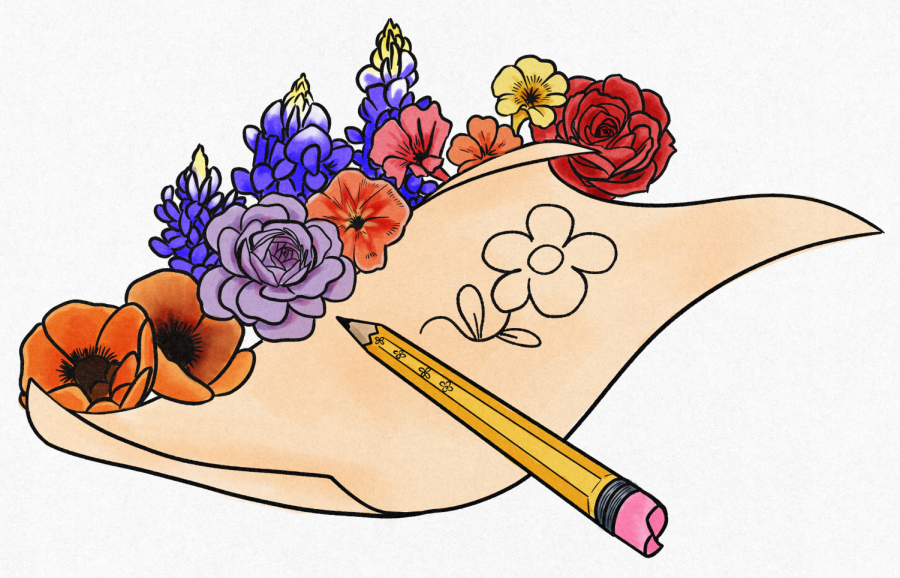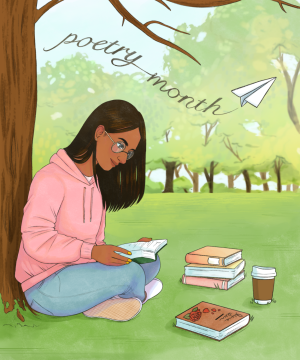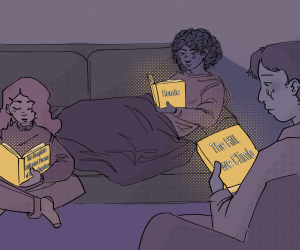The Daily Texan’s list of poetry to welcome spring
March 29, 2023
Striking scenery of green leaves dancing in the wind marks the start of a limbo between winter and summer. With the last few weeks of the spring semester approaching, change swallows campus at every turn.
In preparation for the ripe buds of summer blooms to come from personal developments this spring, The Daily Texan compiled a list of poetry to ease into the atmosphere of an ever-changing season.
“Dear One Absent This Long While” by Lisa Olstein
Olstein explores yearning and lost love through strong natural imagery with her poem “Dear One Absent This Long While.” Olstein walks the reader through subtle desperation with a removed lover by tying the person into scenic aspects of the speaker’s life, seeing them in “a shiver of light” and hearing their name in the “leaves chatter.” Her vivid descriptions of untamed leaves and moss-covered structures instantly muster up feelings of spring, setting the stage for the speaker’s anxious longing for her lover’s return. The slow and simple pace of Olstein’s poetic letter introduces spring by resonating with the hesitation of turning a new leaf.
“A Brother Named Gethsemane” by Natalie Diaz
Set in a familial garden, “A Brother Named Gethsemane” examines a sibling bond within a whirlwind of frustrated attempts at understanding. Diaz roots the abhorrent personality of the speaker’s brother in every aspect of their natural surroundings, an “earth riddled with a brother” making “honeysuckle (sag) with bright sour powder.” The space he once took up sweetly becomes bitter in his own hands, illuminating what it means to look at a loved one through a critical lens. Showcasing the power of one’s emotions to alter the physical nature of one’s life, Diaz prompts readers to ground themselves in their respective gardens and shovel away regardless of the outcome.
“Sonnet” by Alice Moore Dunbar-Nelson
Dunbar-Nelson comments on materialism’s tainting of authentic nature in her sonnet through the speaker’s journey toward reviving their appreciation for the beauty of the world. The speaker laments commercialism swallowing the world around her as she associates violets with “deadening wines” and “florists’ shops.” Dunbar-Nelson paints streams and raptures, likening them to lovers’ intimacy, creating an admiration for a scene often washed away by the glamor of high life. Ultimately thanking her beloved for opening her eyes to the environment she once took for granted, Dunbar-Nelson encourages stepping away from the materials humanity tethers themselves to and opening their hearts to an innate love for the Earth.
“Kyoto: March” by Gary Snyder
Guiding the reader through the motions of entering spring, Snyder begins “Kyoto: March” with “a few light flakes of snow” while anticipating the blossoming of “plum buds.” Snyder prepares winter lovers for the transition to spring through imagery and allusions related to Snyder’s time in Japan. Blurring the line between humans and nature, Snyder relates the blooming of flowers in spring to the action of parents feeding their lovely younglings. Gently taking the reader’s hands, Snyder waltzes his audience into the beauty of spring by paying homage to its predecessor.















